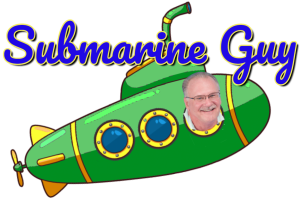Here's Week 11
Tuesday Tech Tip for more leads!
Create a Video Sales Letter (VSL)
Creating a Video Sales Letter (VSL) in one day is all about being focused, clear, and action-oriented. A VSL is designed to quickly engage your audience, address their pain points, and guide them toward taking a specific action, like purchasing a product or signing up for a service.
The key to a successful VSL is combining persuasive copy with compelling visuals, all while maintaining a straightforward message. Efficiency is essential, but you don’t want to sacrifice quality.
Start by identifying your offer and target audience. Your VSL needs to speak directly to the people who are most likely to buy your product or service. Define who they are, what problems they face, and how your offer solves those problems.
Keep it specific. If you’re selling a productivity tool, for instance, your audience might be busy professionals struggling to manage their time. Understanding your audience’s needs and motivations allows you to tailor the VSL to address them directly.
Next, outline the structure of your VSL. A standard VSL follows a clear, logical flow: attention, problem, solution, offer, and call to action. Start with a strong opening that grabs attention within the first few seconds.
This could be a question, a bold statement, or a shocking statistic that speaks directly to your audience’s pain points. For example, if you’re selling a course on time management, your opening might be: “Are you tired of feeling overwhelmed and like there are never enough hours in the day?”
After grabbing attention, immediately introduce the problem your audience faces. Make it relatable and specific. Speak directly to their frustrations, such as “You’ve tried every to-do list app, yet you’re still scrambling at the end of the day, feeling like you’ve accomplished nothing.” The goal here is to get your audience nodding along, acknowledging that you understand their problem.
Once the problem is clear, present your solution—your product or service. Be clear and concise about how your offer solves the problem. This is the core of your VSL, so make sure you’re communicating the value of your solution effectively.
Focus on the benefits, not just the features. For instance, instead of saying, “Our course has 10 modules,” emphasize the outcome: “You’ll learn how to master your time and get more done in less time, without the stress.”
After explaining your solution, introduce your offer. This is where you explain what your audience gets when they take action. Include any bonuses, special features, or guarantees that sweeten the deal.
If you’re offering a discount or limited-time bonus, emphasize that now. Creating urgency is key to driving immediate action. You might say something like, “For the next 24 hours, you’ll get an exclusive 30% off, plus a free one-on-one coaching session if you sign up today.”
End the VSL with a strong call to action (CTA). Make it crystal clear what you want the viewer to do next, whether it’s clicking a button to buy, signing up for a free trial, or scheduling a consultation.
Be direct: “Click the button below to get instant access and start taking control of your time today.” Use language that emphasizes urgency and ease. The simpler and more direct the CTA, the better.
Now that you’ve outlined the flow of your VSL, it’s time to write the script. Keep it conversational, direct, and focused. Imagine you’re speaking one-on-one with your ideal customer.
Write in short, clear sentences and avoid jargon or overly complex language. You’re not trying to impress with big words—you’re trying to persuade. Aim for a script that runs between 2 to 5 minutes, depending on the complexity of your offer. Shorter VSLs tend to perform better, so stay focused on the core message.
As you write, ensure that the script builds naturally from one point to the next. The flow should be smooth, moving from attention to problem, solution, offer, and action without feeling disjointed. After writing the script, read it out loud to catch any awkward phrasing or areas that could be streamlined. Make sure it sounds natural and easy to follow.
Once your script is ready, decide on the visuals. You don’t need a highly produced video for an effective VSL. You can use simple slides, stock images, or even screen recordings, depending on your product.
If you’re comfortable on camera, you can record yourself delivering the script directly, but this isn’t necessary for a strong VSL. The most important thing is that the visuals support and reinforce the message. You can use tools like Canva or Google Slides to create simple, effective visuals that highlight key points in the script.
If you’re creating slides, keep them visually clean and focused. Use bold, large text to highlight the most important phrases. Use images sparingly, only to reinforce the points you’re making.
Avoid clutter—each slide should focus on one core idea or takeaway from the script. This keeps the viewer focused on your message without being distracted by unnecessary details.
Now, record the voiceover. Even if you’re using slides or images, a high-quality voiceover is essential to make the VSL feel professional and engaging. Use a decent microphone and record in a quiet space to ensure clear audio.
Speak confidently and at a steady pace. You want to sound natural and persuasive, not rushed or robotic. If you make mistakes, simply re-record that section, but don’t worry too much about small imperfections. Authenticity often resonates more than perfection.
After recording the voiceover, sync it with your visuals using a simple video editing tool like iMovie, Camtasia, or Adobe Premiere. Align the timing of the slides or visuals with the key points in your voiceover.
Keep transitions smooth and avoid overly flashy effects. The focus should always be on the message, not the visuals. Once everything is aligned and flowing well, export the video in a high-quality format, such as MP4.
Now that your VSL is ready, upload it to a platform like YouTube, Vimeo, or Wistia. You can also embed the video directly on your landing page. Make sure the video player is prominent and easy to find—don’t bury it below the fold. You want visitors to see the VSL immediately when they land on the page.
Finally, promote your VSL. Drive traffic to the page through your email list, social media, and paid ads if you’re using them. Use language that encourages viewers to watch the VSL and take the action you’ve outlined.
Keep an eye on the performance metrics, such as how long people are watching and what percentage of viewers are taking the desired action. You can always tweak the script, visuals, or CTA based on how the VSL is performing.
Call to Action
-
By creating and launching your VSL in a single day, you’ve built a powerful sales tool that can work for you over time.
-
With clear messaging, persuasive delivery, and a direct call to action, your VSL will help convert viewers into customers efficiently..
Warmest regards,

|
Fred Raley The Submarine Guy |
 |
|
P.S. Check out this free Link Tree. It's a cool app that's good to use with Social media |
||